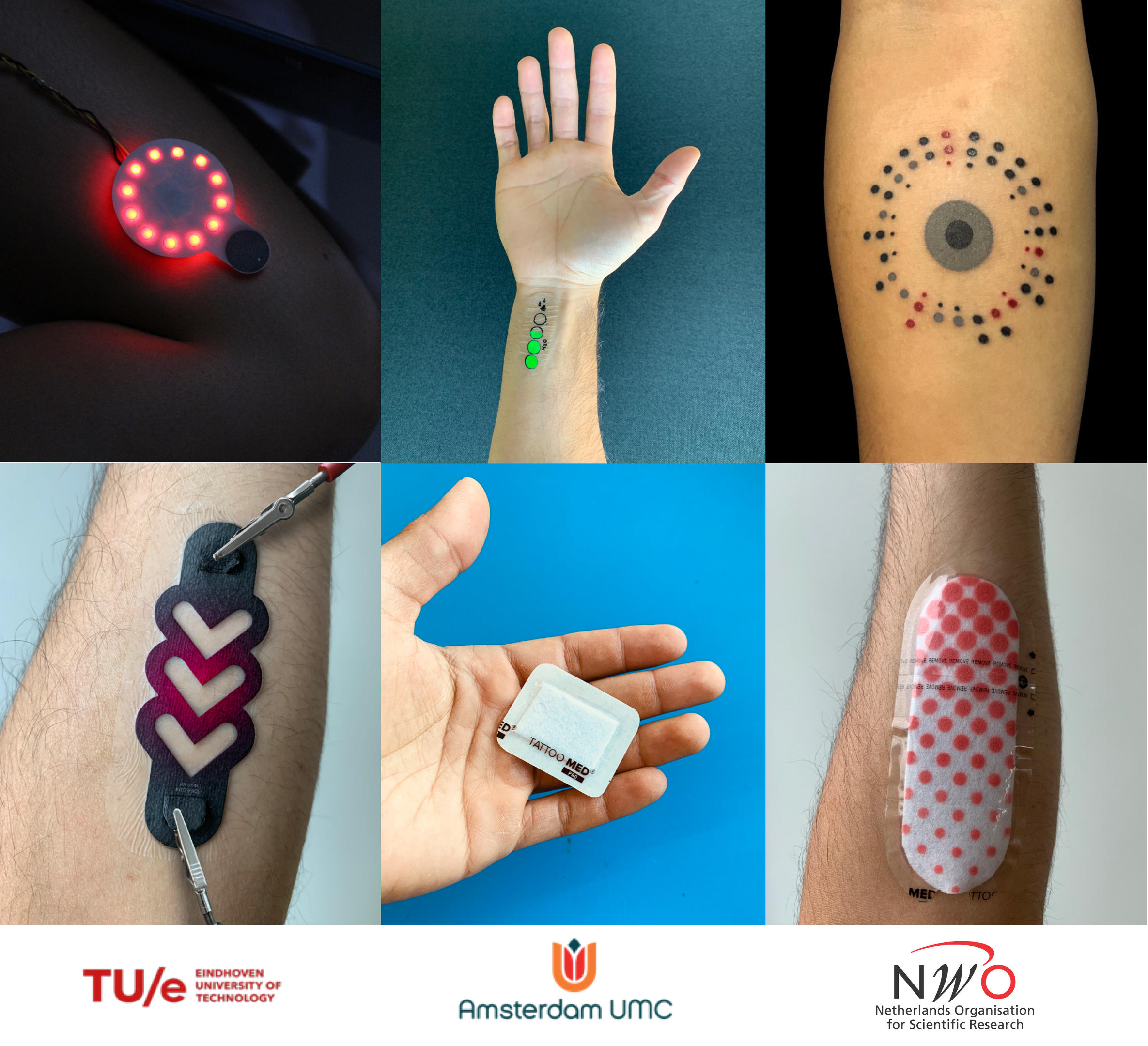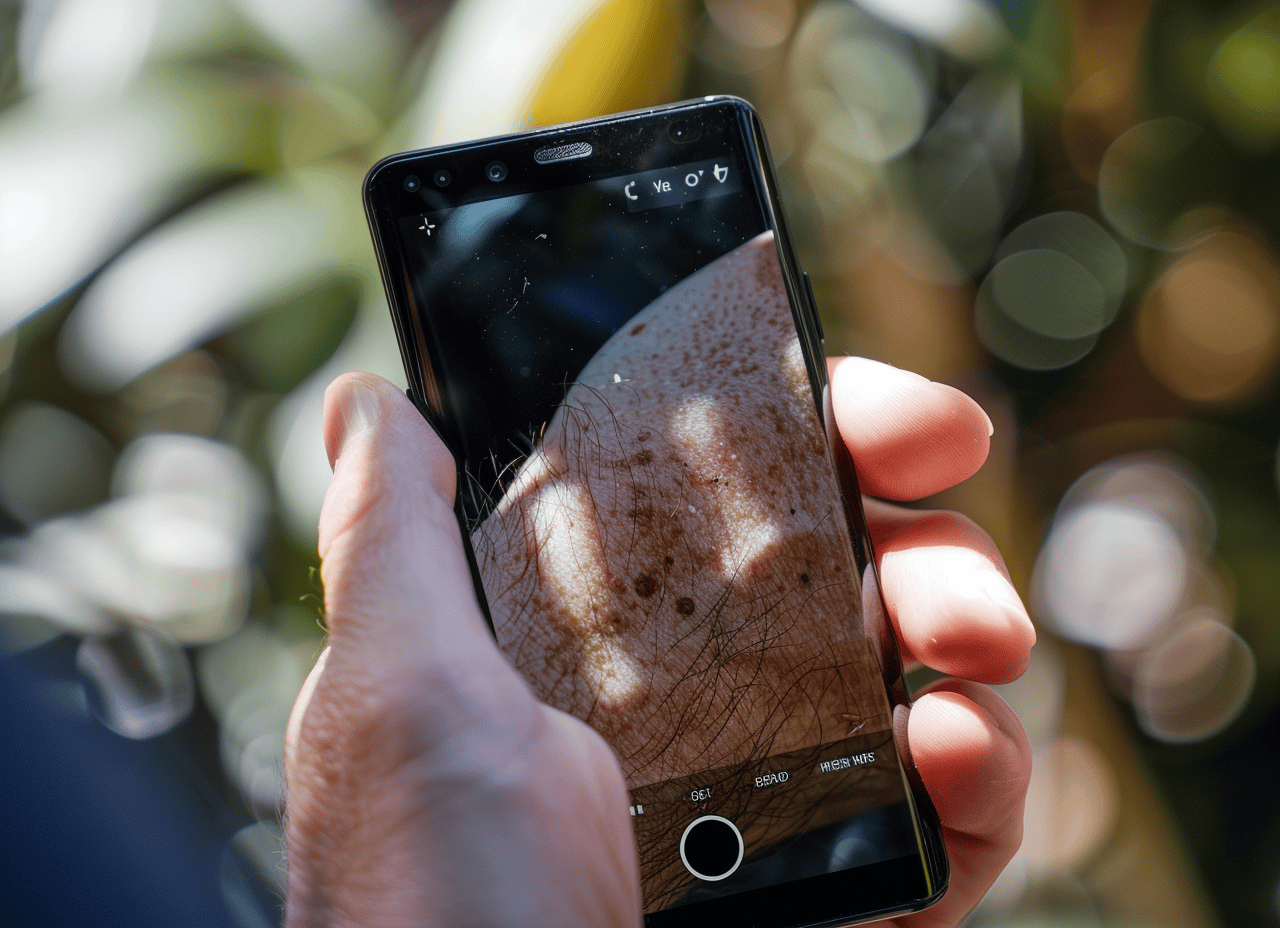
You think you are being healthy by running, but your digital plaster tells you that you are straining your muscles. It may not be nice to hear, but these interactive stickers can help you to exercise without any injuries. The Amsterdam UMC and Eindhoven University of Technology (TU/e) are doing joint research into on-skin interfaces that provide feedback on the health parameters of runners. “And by runners, I don’t mean Sifan Hassan or Usain Bolt, but recreational runners like you and me,” says Evert Verhagen, professor of Epidemiology of Sport, Exercise and Health at Amsterdam UMC.
Running is enormously popular in the Netherlands; roughly 40 percent of the Dutch population puts on their running shoes from time to time. That is more than seven million people. At the same time, running is – after soccer – the most injury-sensitive sport: 50 percent of runners suffer injuries.
A fair amount of scientific research focuses on elite athletes. Verhagen’s research group focuses precisely on the seven million people who run once or twice a week. “We want to provide ‘ordinary’ people with good quality data and tips so that Dutch people can exercise in a healthy way.”
Ambulatory measurements
For that group, Verhagen is researching which movements and exercises work well and which don’t. In order to figure that out, he wants to monitor participants 24/7. “A recreational runner is not training for a whole day, but what she/he does throughout the day – sleeping, working, while at home- does influence that one hour that someone does run. So, you want to measure in a very ambulatory way so that you can say: ‘If you want to do an endurance run, it’s best to run at this level and this intensity. And if you want to run a short lap, you should run at this pace.’
The data is collected using stretch strips, foot pads and heart rate monitors that use tiny electrons. “For example, we place stretch strips on the lower leg to measure the stretch angle of the knee joint and on the ankle, to measure the degree of inversion. If you move a hundred times at a 10-degree angle and then ten times at a 5-degree angle, then you know that something is probably going wrong here.”
Freedom of choice
Verhagen is not looking for any absolute values, but rather for differences on an individual levels. “Suppose you are going to run 10 kilometers. The first 9 you run as per usual, but as soon as you get tired, you start running differently. We want to map out the moment when the strain changes.” Especially in novice runners, there is a lot of difference in the strain levels when they start to get fatigued. Ideally, the runner would then be warned to either slow down or change their posture.
One important result, says Verhagen, is that runners like to have some choice. “Time and again we see that runners want to decide for themselves what they are going to do. We now know how runners can exercise responsibly, but we cannot just foist that advice on them. In addition to freedom of choice, it is also important that people feel that the data belongs to them.”
On-skin interfaces
One question that remains is how the knowledge and data that has already been collected can reach the ‘ordinary’ runner and what they can actually do with it. Which is where on-skin interfaces come in. Verhagen explains that when something is close to your skin, people are more inclined to accept it as their ‘own’ data. “It is not your phone, but your own hand that is providing you with information. The fact that the interface is so close to the skin makes people more likely to follow the advice.”
The skin itself is also an important source of information, Verhagen notes. “For example, sweat percentages, heat and movement can tell you something about how your body reacts to exertion and the amount of water you should be drinking.” Consider on-skin interfaces a little bit like tattoos that change color when subjected to overexertion. Or a patch that shows, based on body fluids like sweat and moisture, how intensely someone is exercising.
Amsterdam UMC is working together with researchers from TU/e who are responsible for the actual design of the interfaces. Juan Restrepo, a researcher at TU/e, recently published an article in which various options are explored from a design perspective. The on-skin interfaces are currently still in the conceptual phase, but Verhagen is expecting to put them into practice in the next three to four years. “Eventually, all that data will then go to your sports watch, so you can see when you’re overstraining your body while exercising.” So, before long, in addition to bad weather and not feeling like it, there will be one less excuse for you to skip your run.
Main photo: Different types of on-skin interfaces.








